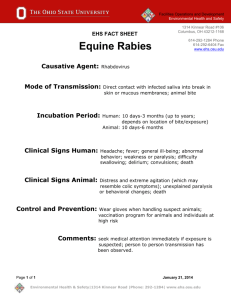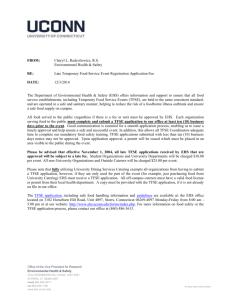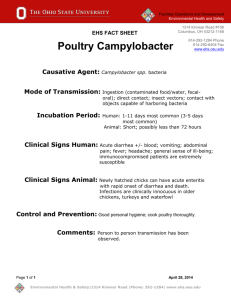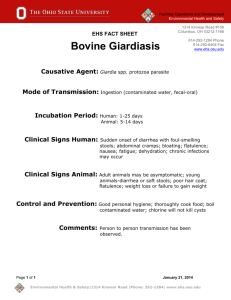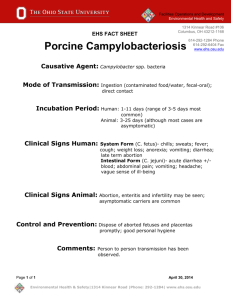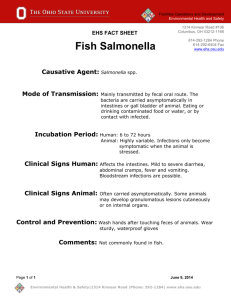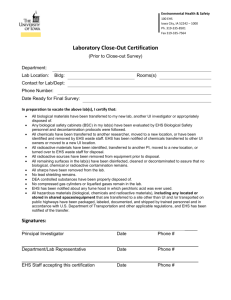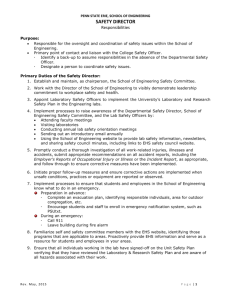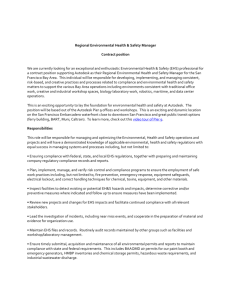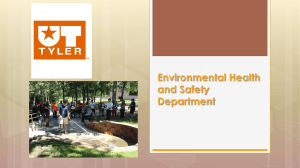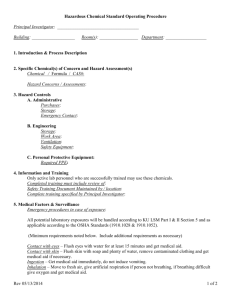New Employee or Student Safety Orientation Checklist Department
advertisement
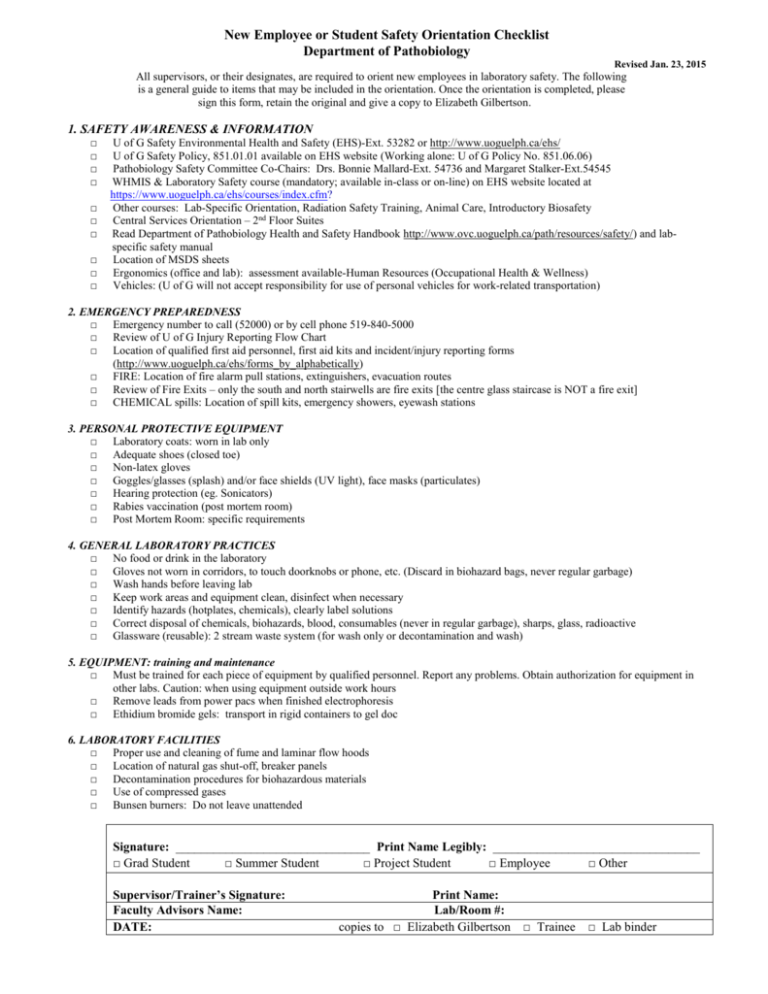
New Employee or Student Safety Orientation Checklist Department of Pathobiology Revised Jan. 23, 2015 All supervisors, or their designates, are required to orient new employees in laboratory safety. The following is a general guide to items that may be included in the orientation. Once the orientation is completed, please sign this form, retain the original and give a copy to Elizabeth Gilbertson. 1. SAFETY AWARENESS & INFORMATION □ □ □ □ □ □ □ □ □ □ U of G Safety Environmental Health and Safety (EHS)-Ext. 53282 or http://www.uoguelph.ca/ehs/ U of G Safety Policy, 851.01.01 available on EHS website (Working alone: U of G Policy No. 851.06.06) Pathobiology Safety Committee Co-Chairs: Drs. Bonnie Mallard-Ext. 54736 and Margaret Stalker-Ext.54545 WHMIS & Laboratory Safety course (mandatory; available in-class or on-line) on EHS website located at https://www.uoguelph.ca/ehs/courses/index.cfm? Other courses: Lab-Specific Orientation, Radiation Safety Training, Animal Care, Introductory Biosafety Central Services Orientation – 2nd Floor Suites Read Department of Pathobiology Health and Safety Handbook http://www.ovc.uoguelph.ca/path/resources/safety/) and labspecific safety manual Location of MSDS sheets Ergonomics (office and lab): assessment available-Human Resources (Occupational Health & Wellness) Vehicles: (U of G will not accept responsibility for use of personal vehicles for work-related transportation) 2. EMERGENCY PREPAREDNESS □ Emergency number to call (52000) or by cell phone 519-840-5000 □ Review of U of G Injury Reporting Flow Chart □ Location of qualified first aid personnel, first aid kits and incident/injury reporting forms (http://www.uoguelph.ca/ehs/forms_by_alphabetically) □ FIRE: Location of fire alarm pull stations, extinguishers, evacuation routes □ Review of Fire Exits – only the south and north stairwells are fire exits [the centre glass staircase is NOT a fire exit] □ CHEMICAL spills: Location of spill kits, emergency showers, eyewash stations 3. PERSONAL PROTECTIVE EQUIPMENT □ Laboratory coats: worn in lab only □ Adequate shoes (closed toe) □ Non-latex gloves □ Goggles/glasses (splash) and/or face shields (UV light), face masks (particulates) □ Hearing protection (eg. Sonicators) □ Rabies vaccination (post mortem room) □ Post Mortem Room: specific requirements 4. GENERAL LABORATORY PRACTICES □ No food or drink in the laboratory □ Gloves not worn in corridors, to touch doorknobs or phone, etc. (Discard in biohazard bags, never regular garbage) □ Wash hands before leaving lab □ Keep work areas and equipment clean, disinfect when necessary □ Identify hazards (hotplates, chemicals), clearly label solutions □ Correct disposal of chemicals, biohazards, blood, consumables (never in regular garbage), sharps, glass, radioactive □ Glassware (reusable): 2 stream waste system (for wash only or decontamination and wash) 5. EQUIPMENT: training and maintenance □ Must be trained for each piece of equipment by qualified personnel. Report any problems. Obtain authorization for equipment in other labs. Caution: when using equipment outside work hours □ Remove leads from power pacs when finished electrophoresis □ Ethidium bromide gels: transport in rigid containers to gel doc 6. LABORATORY FACILITIES □ Proper use and cleaning of fume and laminar flow hoods □ Location of natural gas shut-off, breaker panels □ Decontamination procedures for biohazardous materials □ Use of compressed gases □ Bunsen burners: Do not leave unattended Signature: _______________________________ Print Name Legibly: _________________________________ □ Grad Student □ Summer Student □ Project Student □ Employee □ Other Supervisor/Trainer’s Signature: Faculty Advisors Name: DATE: Print Name: Lab/Room #: copies to □ Elizabeth Gilbertson □ Trainee □ Lab binder
